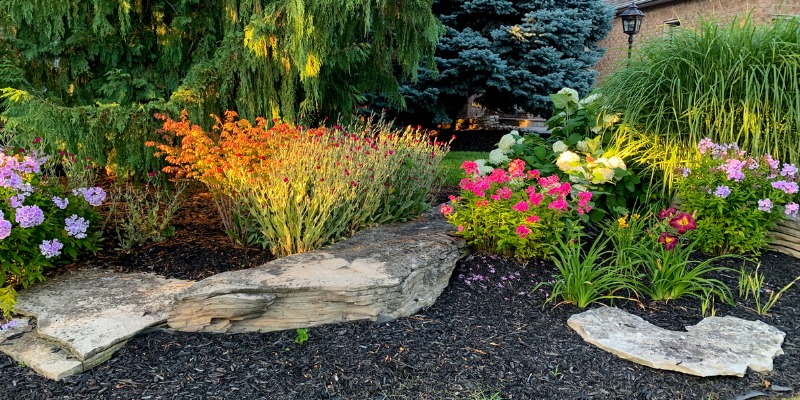If you are thinking of shaking things up around your home to improve the overall aesthetic, then renovating or landscaping is the way to go. They say you must crack a few eggs to make an omelette, so in pursuit of a beautiful home environment, your yard and garden will take a few hits if preventive measures are not taken.
Torn grass, broken branches, trodden flower beds, a damaged root system, and compacted soil account for construction damage due to work boots and heavy equipment. Your newly planted geraniums will suffer if you neglect their well-being during this busy period.
You are probably asking yourself, “how can I protect my gardens during construction?” Consider following these four tips to reap all the benefits of your home renovation project.
1. Move some of your plants
If you are carrying out a landscaping or renovation project and the question of whether your perennials will survive the associated human traffic and machinery, chances are they will not. You will need to transplant your plants from one ground to another.
Small bedding plants can be carefully uprooted, and their roots enclosed within moistened burlap for a couple of weeks. Larger plants may necessitate the services of a professional to safely move them, install them in properly prepared soil, and bring them back to their original home when your renovation project is done. Plants that are too large to move can be enclosed with fencing and well-marked posts.
2. Invest in plant protection covers
During construction, it’s prudent to cover your nearby garden plants. There are numerous toxic chemicals, paint, tar, and other materials that may harm your plants on contact. Lightweight cloth and sheets are cheap and excellent plant protection options. They will keep your geraniums safe while still letting sunlight and air in. More delicate plants will require a scaffold constructed around them with a cloth draped over to prevent stems and foliage from being crushed.
3. Protect the soil
The quality of the soil your plants grow in is essential in their development. It’s good planning to talk to the construction crew digging up holes and channels to be careful with the topsoil. More often than not, when workers are done, the nurturing topsoil ends up at the bottom and clay at the top. Your plants will thank you for carefully putting the clay back first and then the topsoil.
Also, use plywood boards and lawn protection mats as much as possible. They soften the blow foot and equipment traffic deal to your landscape. These tools evenly distribute the weight placed on them, preventing torn-up grass and soil compaction. Soil compaction leads to reduced air levels in the soil, poor water absorption, as well as poor drainage. This will harm everything in the garden, from tiny plants to trees.
4. Clean up debris
What you, the homeowner, can do is damage limitation. Use a canopy or tarp to cover things exposed to falling debris. If it’s not a workable solution, do the next best thing; carefully and thoroughly clean the site of materials like concrete, plastic, glass, tiles, and any other objects. This fallen debris can extensively damage the landscape if they are left lying around for too long.
Protect Your Beautiful Garden Professionally
Taking care of plant life before and amidst landscaping projects requires a lot of dedication and effort on your part; however, it’s a small price to pay for a garden that is the envy of the neighbourhood. Follow the few tips outlined, and your home will be doubly blessed – first, with an elegantly remodelled landscape, and secondly, with thriving flower beds, shrubs, and trees.
Better yet, reap even more benefits by using professional landscaping services. Lawrence Park Complete Garden Care has been involved in designing, nurturing, and maintaining gardens in Toronto for over 30 years. Contact us today, and we will have your landscape looking its best in no time.
